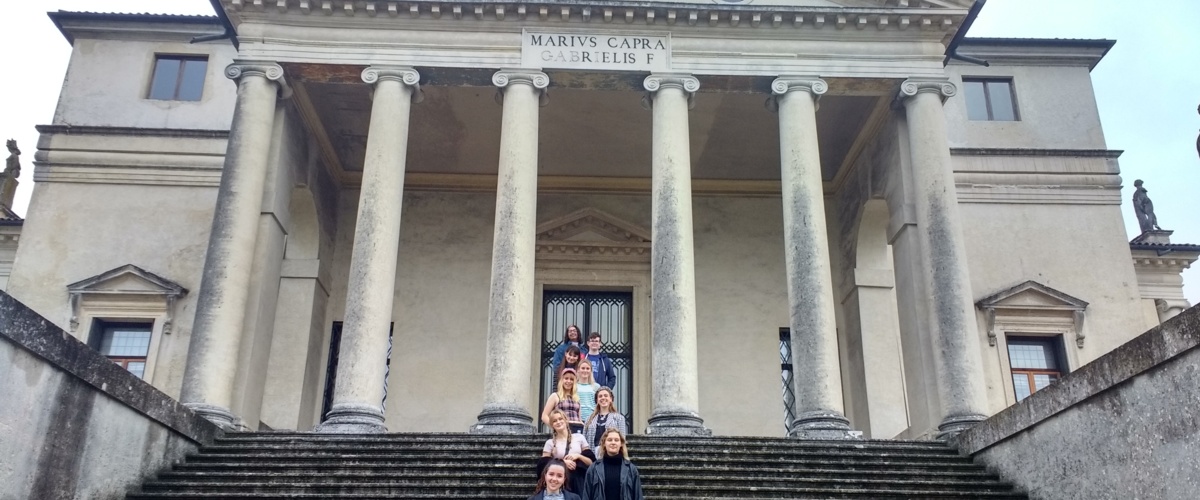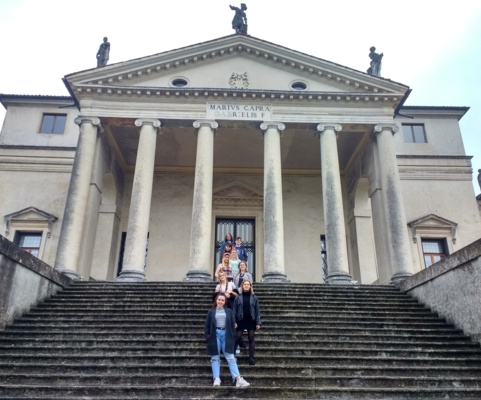With the Sixth Form admissions deadline approaching, we caught up with pupils from our Art History department. Art History is unique to the Sixth Form and encompasses a range of disciplines. Here is what pupils have to say:
"I have found Art History to be a really interesting blend of themes and concepts. It has allowed me to investigate my interest in architecture further and develop my visual analysis skills allowing me to look at art and architecture in new ways. The vast subject matter and time periods that are covered combined with the array of works studied including paintings, sculpture and architecture continues to keep it interesting whilst being challenging yet rewarding. There are also a number of amazing trips on offer as part of the course allowing you to see the artwork you study in person and put the skills you learn into practice." - Isabel Cutts, U6
"Art History relates to so many subjects, encompassing context which you may investigate in History, Classics, English Literature and Art. I have found this particularly enjoyable as my A Level studies have been relevant to one another. I enjoy being able to not just appreciate the beauty of a work of art, but also analyse the effects of techniques and the context affecting it. The breadth of study in the Art History A Level is what makes it so enjoyable; encompassing painting, drawings, photography, performances pieces, sculpture and architecture." - Emily White, U6
We also spoke to Head of Art History, Hollie Williams-Goff, who answered a few frequently asked questions about her subject:
Why choose A Level Art History?
This course develops student understanding of the relationship between society and art; art historical terms, concepts and issues; the influence of cultural, social and political factors as well as developments in materials, techniques and processes of both art and architecture over time.
- Core visual literary skills - The initial Visual Analysis topic delivers the core skills of visual literacy and understanding, vital skill in today’s visual world.
- Global scope - The inclusion works from beyond the European tradition in the thematic topics introduces a global scope into the syllabus that is appropriate for the modern world.
- Local perspectives – Allowing centres to choose which works to teach will allow them to make use of their local museums and galleries.
- Opportunities for breadth and depth - The five Periods give the opportunity to study some of the most significant and exciting eras of art and architecture in depth. Students will continue to build on and develop their skills of visual literacy and their knowledge base as they expand from the breadth of the Themes to the greater detail of Periods.
- Clear assessments - The A Level syllabus we follow offers clear assessment, allowing students the opportunity to engage in debate and evaluate ideas.
- Access to cultural heritage - Over the two-year course, students will develop the skills and understanding to enjoy a lifetime of access to, and appreciation of, the culture, heritage and ideas of the world around them.
- Supports progression to further study - All elements of this course equip students with skills for higher education and beyond: art history’s inter-disciplinary benefits are key to this, as are the requirements for all students to learn to analyse, research and to create substantiated reasoned argument in written form.
What can I do with this subject?
Pupils can progress from this qualification to:
- Higher education courses in related subjects, including Art History, History and Art and Design.
- A wide range of other higher education courses in other subjects that require general analytical and interpretative skills
- Work in museums and galleries
- Careers in sectors that require visual literacy and analytical skills, such as advertising, marketing, communications
Do I need to know anything about Art History to take it?
No! There is no expectation that pupils will have any prior knowledge of this subject as it is not a GCSE option all pupils will be new to the subject.
Is Art History a good fit for me and my other subjects?
Pupils who would benefit most from studying this qualification are likely to have an aptitude for and enjoyment of GCSE courses such as Art and Design, History, or another humanities subjects such as English or Classical Civilisations.


